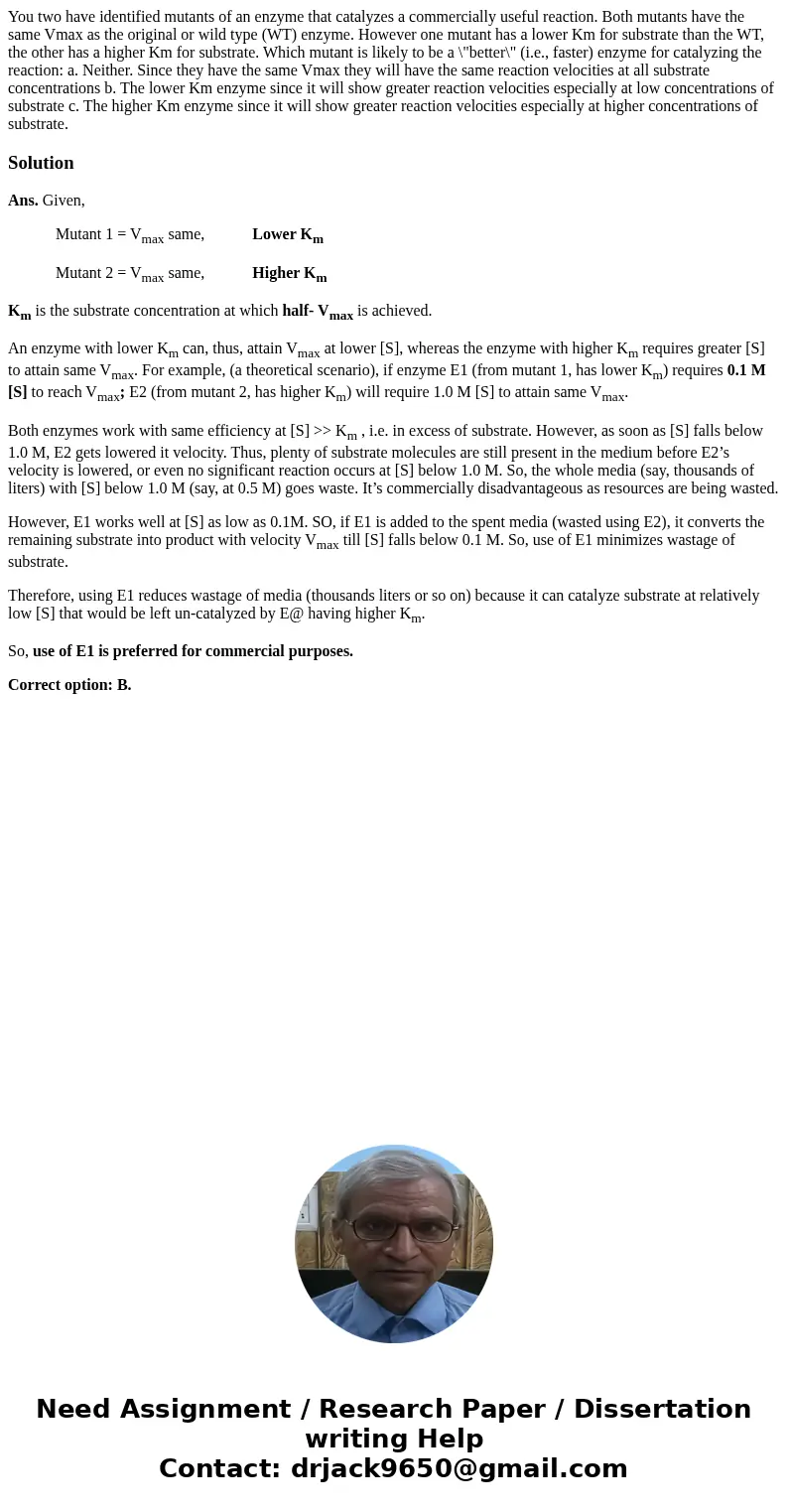You two have identified mutants of an enzyme that catalyzes
Solution
Ans. Given,
Mutant 1 = Vmax same, Lower Km
Mutant 2 = Vmax same, Higher Km
Km is the substrate concentration at which half- Vmax is achieved.
An enzyme with lower Km can, thus, attain Vmax at lower [S], whereas the enzyme with higher Km requires greater [S] to attain same Vmax. For example, (a theoretical scenario), if enzyme E1 (from mutant 1, has lower Km) requires 0.1 M [S] to reach Vmax; E2 (from mutant 2, has higher Km) will require 1.0 M [S] to attain same Vmax.
Both enzymes work with same efficiency at [S] >> Km , i.e. in excess of substrate. However, as soon as [S] falls below 1.0 M, E2 gets lowered it velocity. Thus, plenty of substrate molecules are still present in the medium before E2’s velocity is lowered, or even no significant reaction occurs at [S] below 1.0 M. So, the whole media (say, thousands of liters) with [S] below 1.0 M (say, at 0.5 M) goes waste. It’s commercially disadvantageous as resources are being wasted.
However, E1 works well at [S] as low as 0.1M. SO, if E1 is added to the spent media (wasted using E2), it converts the remaining substrate into product with velocity Vmax till [S] falls below 0.1 M. So, use of E1 minimizes wastage of substrate.
Therefore, using E1 reduces wastage of media (thousands liters or so on) because it can catalyze substrate at relatively low [S] that would be left un-catalyzed by E@ having higher Km.
So, use of E1 is preferred for commercial purposes.
Correct option: B.

 Homework Sourse
Homework Sourse